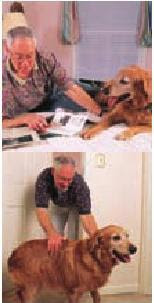your asthma can be very well controlled.
They reduce and help prevent the inflammation and swelling of your airways. If inflammation is controlled, your chances of having an asthma attack are low. Remember, managing your triggers, along with using long-term medicines, will give you good control of inflammation.
• Inhaled corticosteroids are the preferred medicine for persistent asthma (National Asthma Education and Prevention Program 2002).
• They must be used regularly to be effective, usually every day.
• You cannot become addicted to them, even if you use them for many years.
• Most will be inhaled, some are swallowed.
• With each new inhaler, especially the corticosteroid inhaler, check the number of doses in the canister. Count the number of doses you will be using each day and divide that number into the total number in the canister. This will tell you how long the medicine will last.
Write the date to call for a refill on the canister. DO NOT USE BEYOND THE NUMBER OF DOSES ON THE CANISTER.
• DO NOT DROP THE CANISTER INTO WATER.
Inhaled Corticosteroids
T H E S E A R E I N H A L E D• Below are examples of the most common medicines used for controlling
inflammation and swelling of the airways.
• They are not the same as muscle-building steroids that are misused by athletes.

1.FLUTICASONE/SALMETEROL
(Flovent/Serevent) Combination Therapy (Advair Diskus)
2.FLUTICASONE
(Flovent)
3BUDESONIDE
( Turbuhaler)
P O S S I B L E S I D E E F F E C T S
• Oral thrush
(fungal infection in mouth)
• Dysphonia (hoarseness)
• Minimum growth delay in first
year of treatment with children.
Research shows these children
attain their normal height. Your
provider will keep your child on the
lowest maintenance dose possible.
Uncontrolled asthma may cause
more development problems than
long-term medicine.
Oral Corticosteroids
T H E S E A R E S W A L L O W E DPREDNISONE
- Deltasone
- Prednisone
METHYLPREDNISOLONE
- Medrol
- Methylprednisolone
PREDNISOLONE
- Prelone Syrup
- Pediapred
P O S S I B L E S I D E E F F E C T S
You may notice after a few days:
• Fluid retention
• Increased appetite
You may experience after several
months of use:
• Adrenal suppression
(less able to handle stress)
• Decreased resistance
to infection
(get infections more easily)
You may experience after several
months or years of use:
• Moon face
• Cataracts
• Excess facial hair
• Osteoporosis
Non-Steroid Medicine T H I S I S A L W A Y S I N H A L E D• Protects the airways from some asthma triggers.
• Can help prevent asthma attacks due to exercise.
• Must take at least three times a day to be effective.
CROMOLYN SODIUM
(Intal)

P O S S I B L E S I D E E F F E C T
• Dry mouth
































